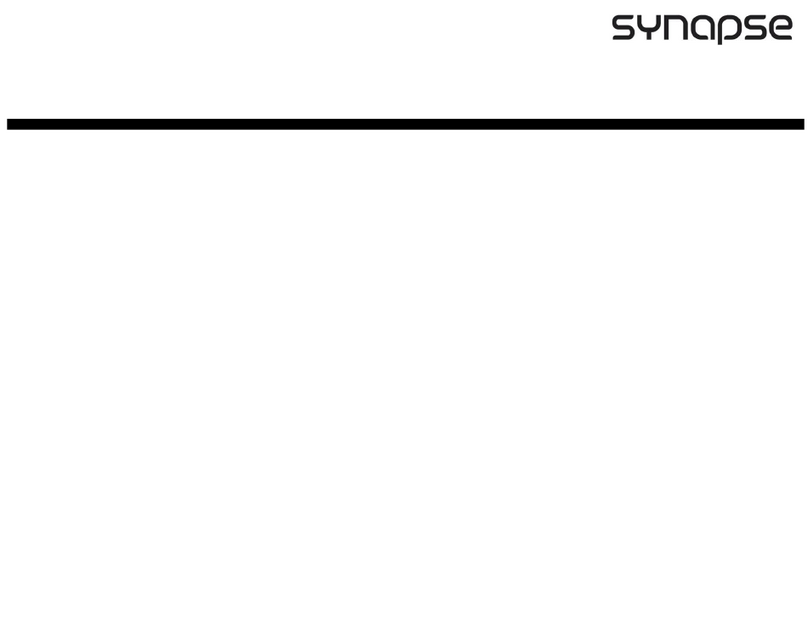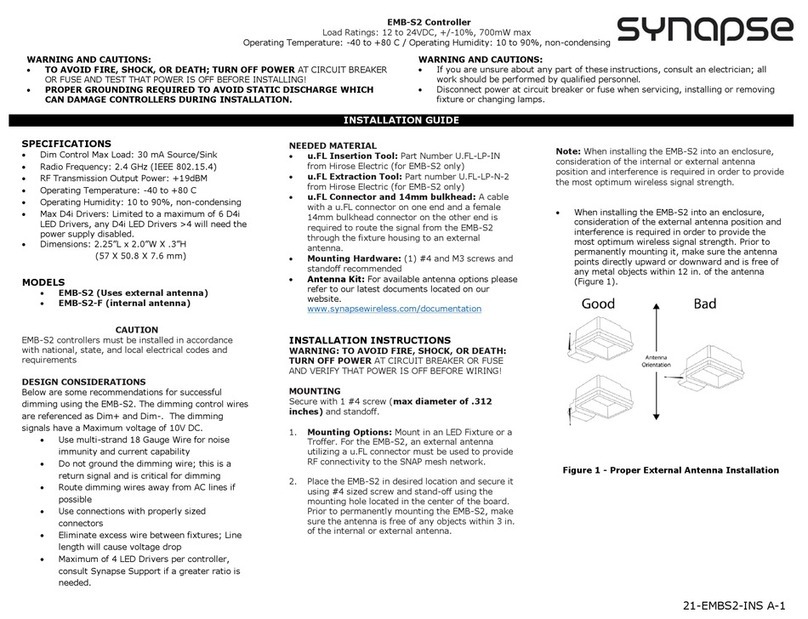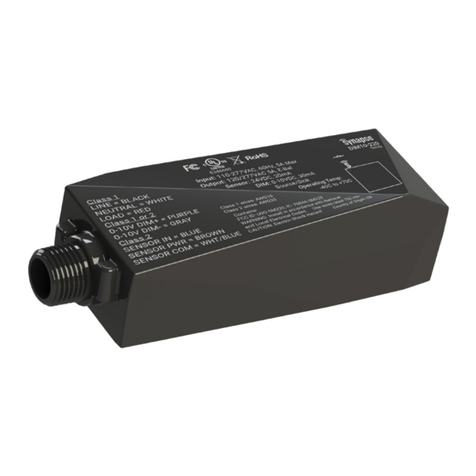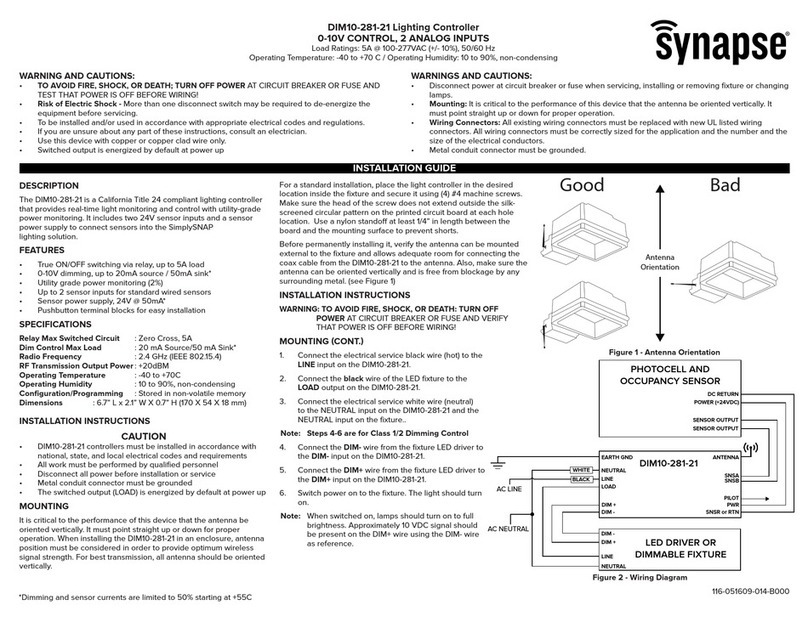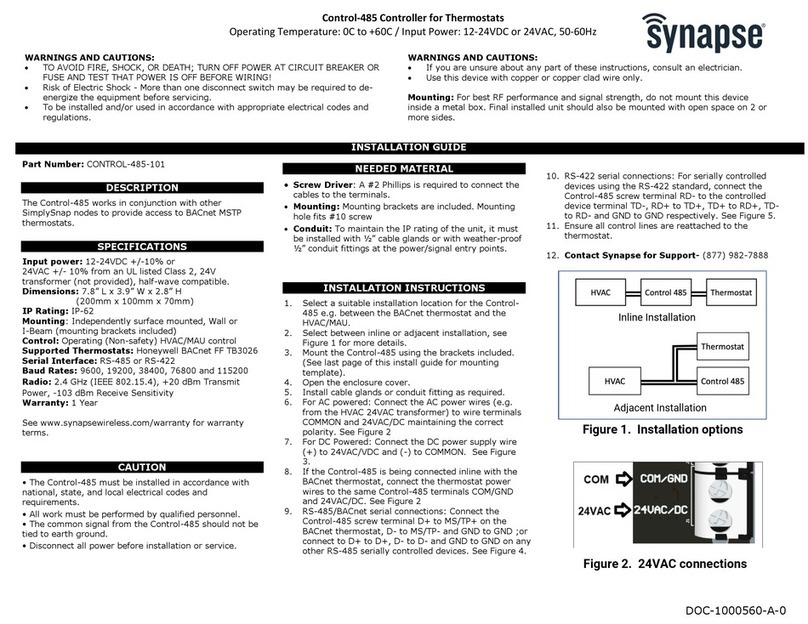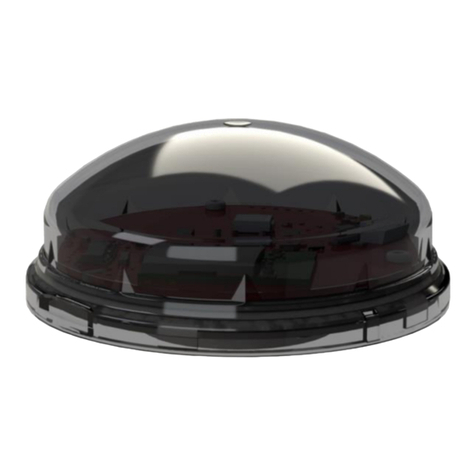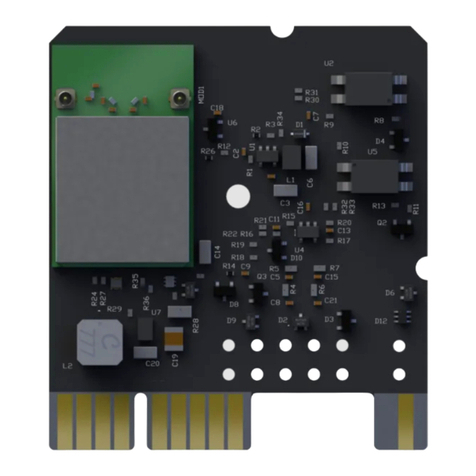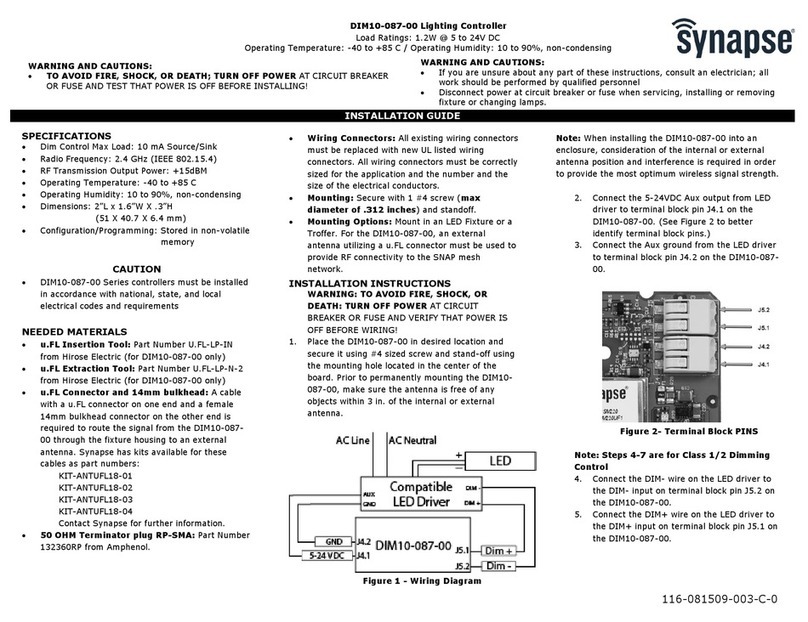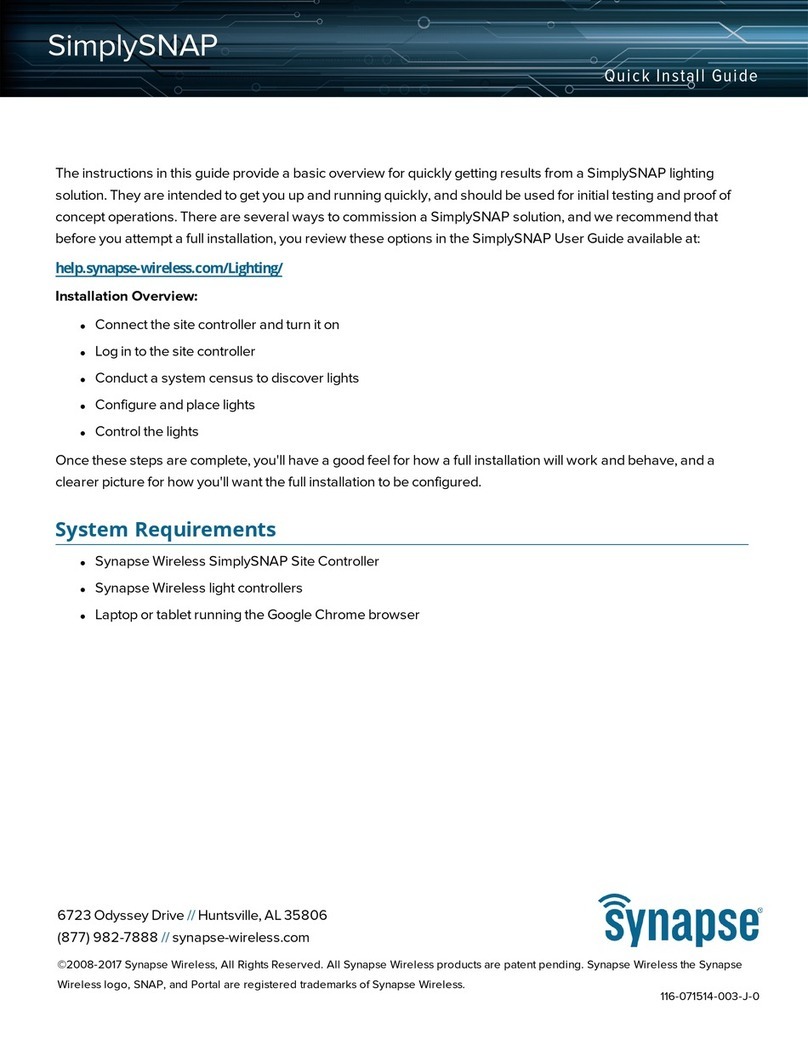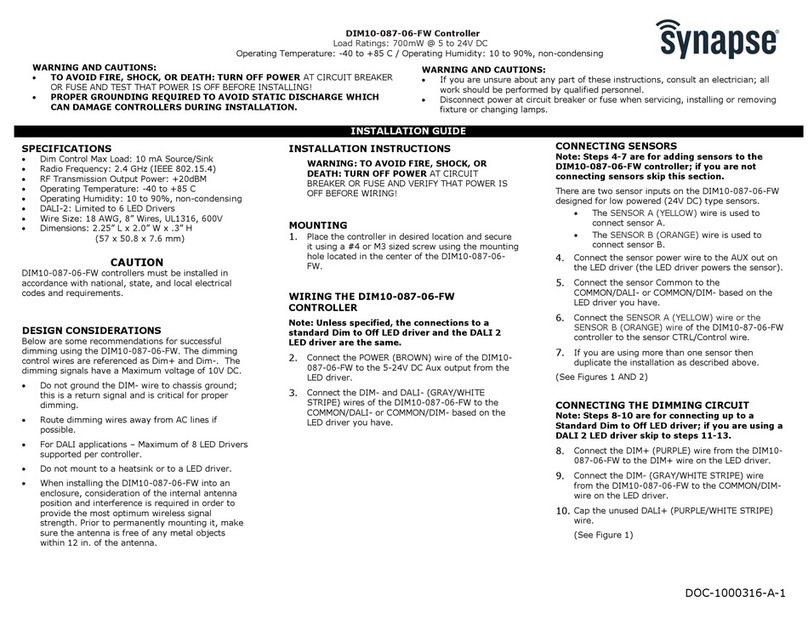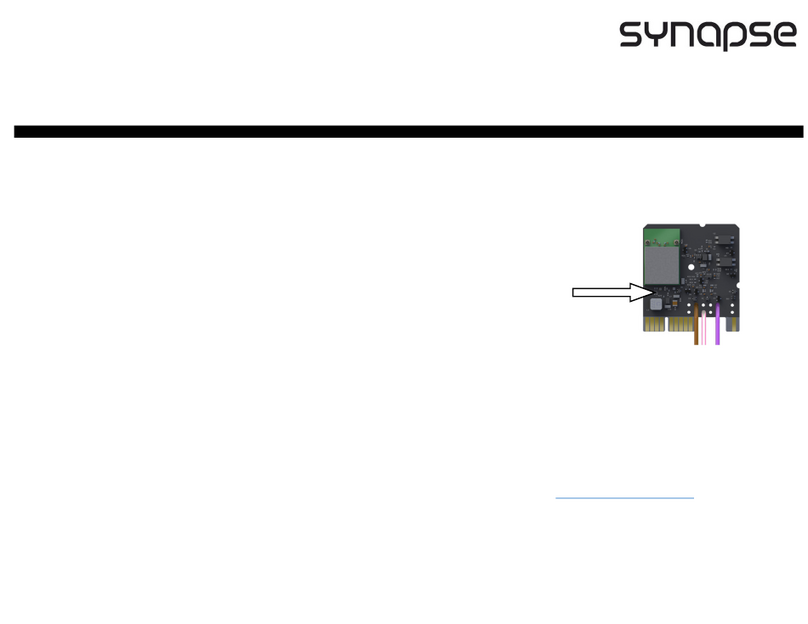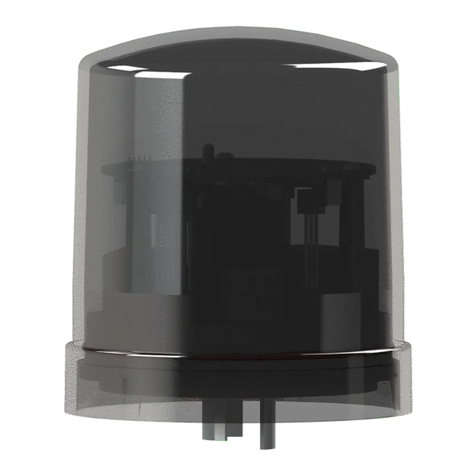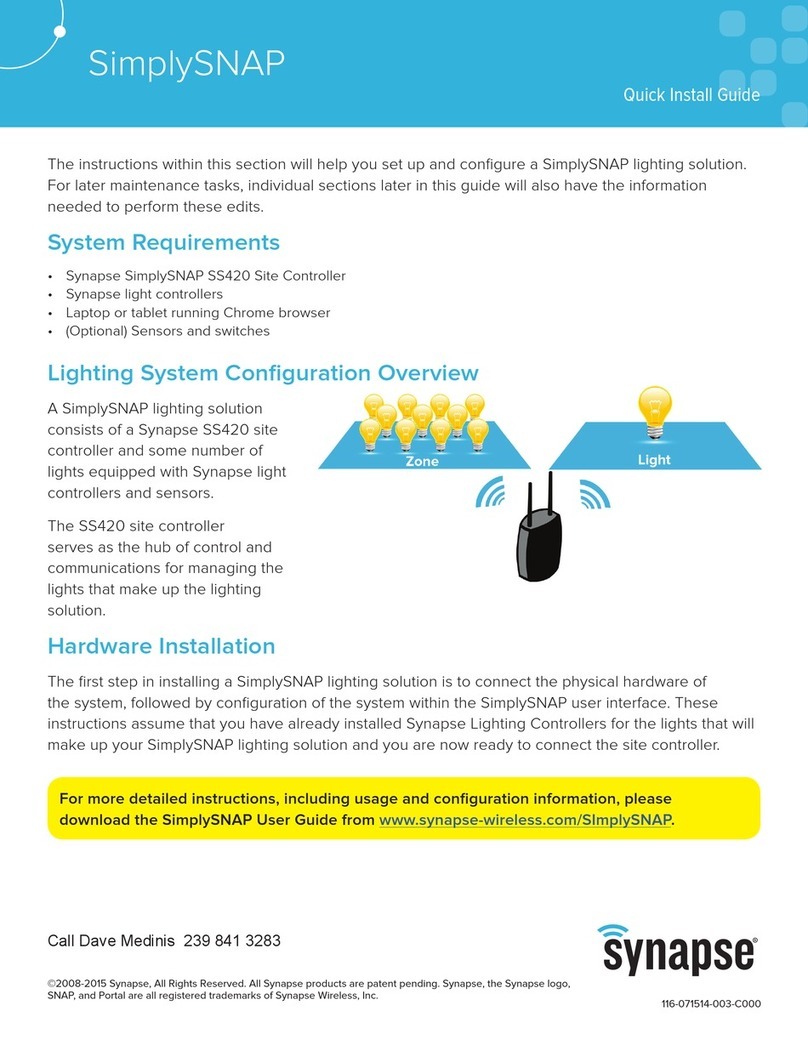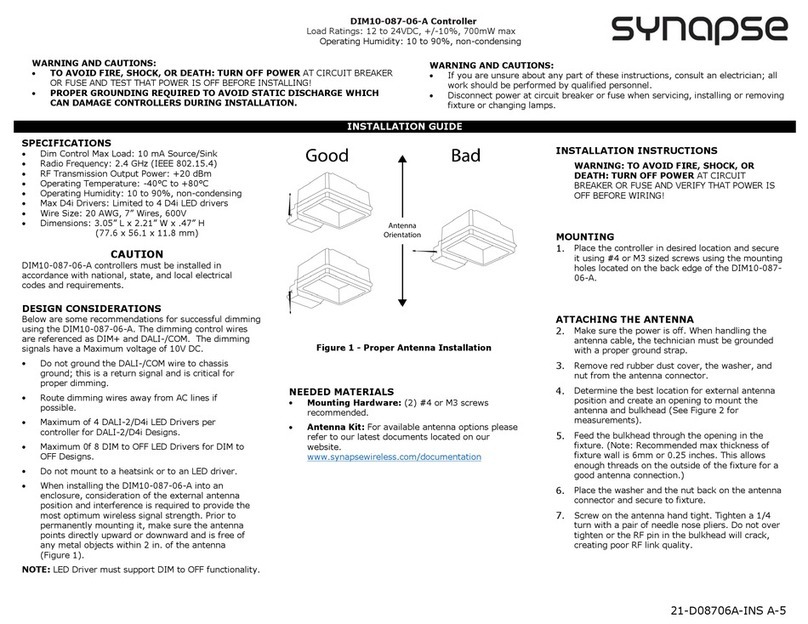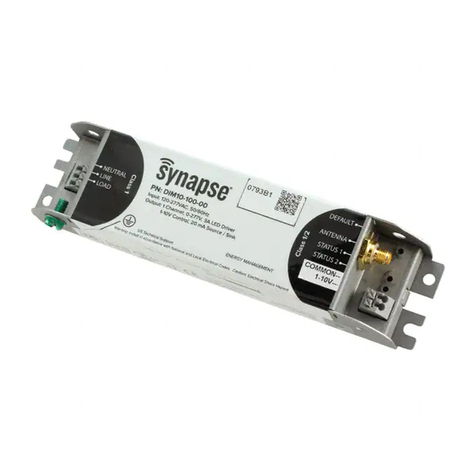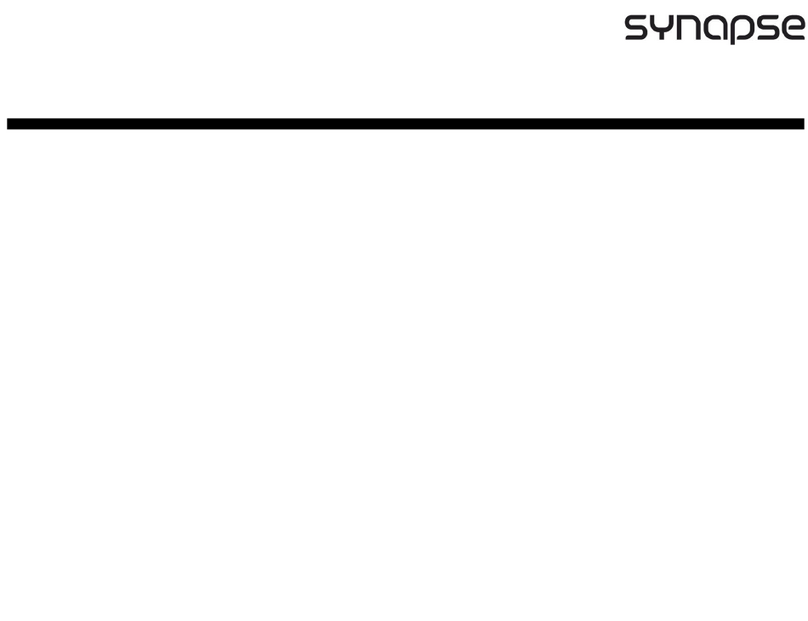
DOC-1000089-B-1
USING THE AC CAGE CLAMP
Synapse’s AC terminal blocks use a secure locking
mechanism for the AC connections that is called a cage
clamp. To securely attach the AC wires to the DIM10-
250 follow the directions below.
1. Strip 1/3” of the conductor wire.
2. Insert a small bladed screw driver inside the
square hole release mechanism to open the cage
clamp. (Figure 4)
3. Insert the wire into the round hole to the cage
clamp.
NOTE: The conductor wire should fall into the
hole with no force when the clamp is properly
opened.
4. Hold the wire in place as you remove the small
screw driver from the square hole.
5. Tug on the conductor to verify it is snuggly
clamped. If it is not snug, go back to step 2 and
repeat.
Insert small bladed screwdriver into square slot before
inserting the wire in the corresponding circular hole.
Applying excessive force to the terminal blocks may
result in its failure.
Figure 4 - Insert a small bladed screwdriver
before inserting the conductor wire.
USING THE DC CAGE CLAMPS
For the DC Cage Clamps, use a small flat head
screwdriver to push the release button (Figure 5)
before inserting the wire.
Use small bladed screwdriver to press release button
before inserting wire in the corresponding circular hole.
Applying excessive force to the terminal blocks may
result in its failure.
Figure 5 - Use a small bladed screwdriver to
press the clamp release before inserting the wire.
REGULATORY INFORMATION AND
CERTIFICATIONS
RF Exposure Statement: This equipment complies
with FCC radiation exposure limits set forth for an
uncontrolled environment. This equipment should be
installed and operated with minimum distance of 20cm
between the radiator and your body. This transmitter
must not be co-located or operating in conjunction with
any other antenna or transmitter.
Industry Canada (IC) certifications: This digital
apparatus does not exceed the Class B limits for radio
noise emissions from digital apparatus set out in the
Radio Interference Regulations of the Canadian
Department of Communications.
Le present appareil numerique n’emet pas de bruits
radioelectriques depassant les limites applicable aux
appareils numeriques de la class B prescrites dans le
Reglement sur le brouillage radioelectrique edicte par
le ministere des Communications du Canada.
FCC certifications and regulatory information
(USA only)
FCC Part 15 Class B: This device complies with part 15
of the FCC rules. Operation is subject to the following
two conditions: (1) These devices may not cause
harmful interference, and (2) These devices must
accept any interference received, including interference
that may cause harmful operation.
RADIO FREQUENCY INTERFERENCE (RFI) (FCC
15.105): This equipment has been tested and found to
pursuant to Part 15 of the FCC rules. These limits are
designed to provide reasonable protection against
harmful interference in a residential installation. This
equipment generates, uses, and can radiate radio
frequency energy and, if not installed and used in
accordance with the instructions, may cause harmful
interference to radio communications. However, there
is no guarantee that interference will not occur in a
particular installation. If this equipment does cause
harmful interference to radio or television reception,
which can be determined by turning the equipment off
and on, the user is encouraged to try to correct the
interference by one or more of the following measures:
(1) Re-orient or relocate the receiving antenna; (2)
Increase the separation between the equipment and
the receiver; (3) Connect the equipment into an outlet
on a circuit different from that to which the receiver is
connected; (4) Consult the dealer or an experienced
radio/TV technician for help.
Declaration of Conformity (FCC 96-208 & 95-19):
Synapse Wireless, Inc. declares that the product name
“DIM10-250-11” to which this declaration relates, meet
the requirements specified by the Federal
Communications Commission as detailed in the
following specifications:
Part 15, Subpart B, for Class B equipment
FCC 96-208 as it applies to Class B personal computers
and peripherals
This product has been tested at an External Test
Laboratory certified per FCC rules and has been
found to meet the FCC, Part 15, Emission Limits.
Documentation is on file and available from
Synapse Wireless, Inc.
If the FCC ID for the module inside this product
enclosure is not visible when installed inside another
device, then the outside of the device into which this
product is installed must also display a label referring
to the enclosed module FCC ID. Modifications (FCC
15.21): Changes or modifications to this equipment not
expressly approved by Synapse Wireless, Inc., may
void the user’s authority to operate this equipment.
CERTIFICATIONS
Model : 200366-01
Contains FCC ID : U9O-SM220
Contains IC : 7084A-SM220
UL File No :E346690
Contact Synapse for Support-(877) 982-7888
